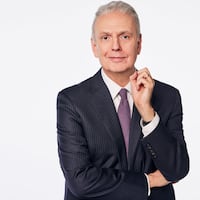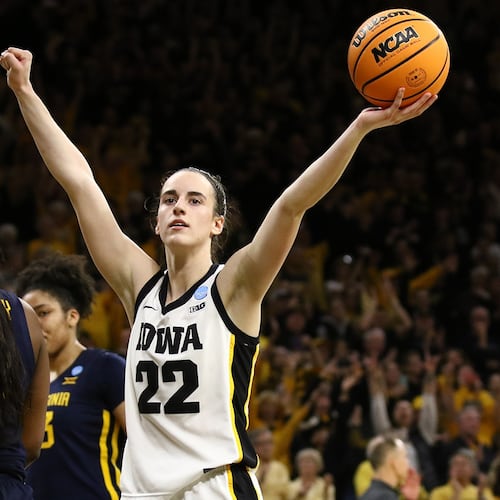The Atlanta Braves' corner infielders in 2017 had WAR values, as calculated by Baseball-Reference, of 0.7 and minus-1.3. WAR stands for "wins above replacement," and from that we could extrapolate that these two needed replacing. Manning positions expected to produce solid offensive numbers, the Braves had two men whose WRC+ -- weighted runs created, adjusted for league and park averages – were 95 and 100. The league average is 100.
At season’s end, both men were 33. They were under contract for 2018 for $11 million and $21.75 million, respectively, though in the latter case, the Braves were obliged to pay only – only! -- $18.25 million. On the final day of the 2017 season, these were scheduled to be, behind Freddie Freeman, the second- and third-highest-paid Braves in 2018.
It was taken for granted that the regime of John Coppolella and John Hart would sell either/both for whatever it could get. (Never mind that the Two Johns were responsible for bringing both outfielders to Atlanta.) For one thing, Ronald Acuna – who moved from Single-A to Triple-A in one summer en route to becoming baseball’s top prospect – needed somewhere to play. For another, the two incumbents had proved they weren’t good enough.
Over 4-1/3 collective Atlanta seasons, these two outfielders mustered an aggregate WAR of 2.8. Center fielder Ender Inciarte posted a 3.8 WAR by himself in 2016 alone. The Braves had gotten next to nothing from two heavy-by-Braves-standards investments, and it was past time to cut bait.
Sure enough, Alex Anthopoulos – hired as general manager after the Two Johns were swept aside – managed to trade the left fielder, although the Braves had to absorb $23 million in salary to do it. The right fielder stayed. Next week those two will start for the National League in the All-Star game. If you say you saw this coming, you're lying.
Nick Markakis hit a slew of singles over his first three years here, but in an era based on the Three True Outcomes – walks, strikeouts and home runs – he was a man out of time. The question I got most often from those in the sabermetric set was, “Why did a rebuilding team spend $44 million on him?” I asked the rebuilders themselves, and they said they liked his makeup. Still: Even the Kardashians don’t pay $44 million for makeup.
Matt Kemp was imported so Hector Olivera, spectacular flop, could be offloaded, his name never to be spoken again. On arrival in August 2016, Kemp became part of a suddenly not-awful batting order. He became the right-handed complement to Freeman, and Kemp – who shed weight over the offseason – was not-awful again at the start of 2017. Then he got awful. He appeared to gain twice what he'd lost. By September, he was painful to watch afield. The in-house line was that Kemp's follies in left caused call-up Luiz Gohara's ERA to balloon to unsightly 5.95.
The Braves sent Kemp back to the Dodgers, whence he began, for Adrian Gonzalez, Brandon McCarthy, Scott Kazmir and Charlie Culberson. Only two of the four made it out of spring training. Gonzalez was bought out as soon as the trade was consummated. Meanwhile, everyone in L.A. figured Kemp had no chance of making the Dodgers’ 25-man lineup. But looky here.
Slimmer once more, Kemp is hitting .316 with 15 home runs and 58 RBIs. His OPS is .903. He has a 1.6 WAR and is on pace to have his best season since 2011, when he finished second to Ryan Braun in the MVP voting. He’s not the Matt Kemp of old, but he’s a real player again.
Markakis is hitting .322 with 10 homers and 59 RBIs. His OPS is .879. Only once in 13 big-league seasons has he managed a better OPS – that in 2008, when he was 24. Over his first three Braves seasons, his WRC+ was 106, 98 and 95. Today it’s 135. On Sunday, Markakis became the longest-serving player ever to be named an All-Star for the first time, and he wasn’t just named. He was elected by the fans. As was Kemp.
Russia over Spain in the World Cup was a massive upset, but that can't be the stunner of a summer that just gave us Nick Markakis and Matt Kemp as All-Stars. A year ago, FanGraphs ranked the Braves 22nd among the 30 MLB clubs in right-field production and 29th in left-field yield. Now the men who occupied those spots will be starting in the Midsummer Classic.
We all know that – borrowing from John Sterling, himself a former Braves employee – you can’t predict baseball, but never in a million years could we have imagined this. And here’s the wildest part: The third NL starting outfielder is Bryce Harper, and on the strength of this season, he’s the one who doesn’t belong.
About the Author
The Latest
Featured

